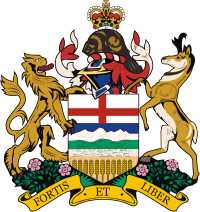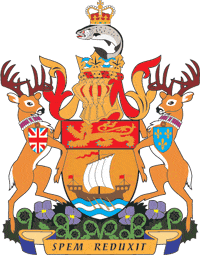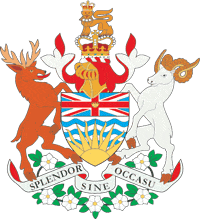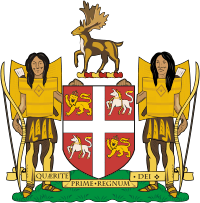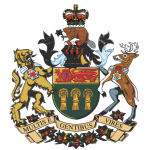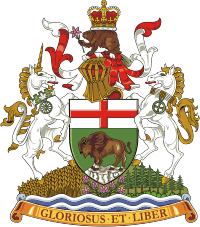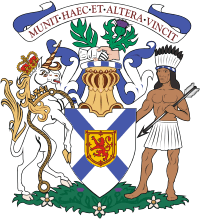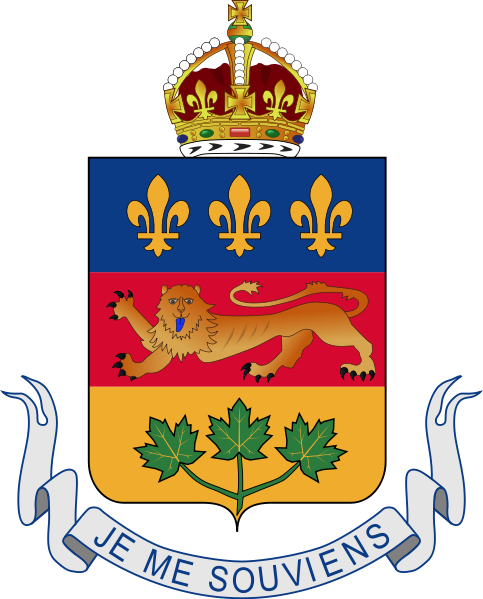The History of the Angus
The Beginning or Angus – the 1800’s
 The original village plot of Angus was laid out in 1833. There was an existing saw mill in place along the Pine River and the village was originally to be named “Rippon”. The village or Rippon never materialized so the area remained sparsely settled for the next 20 years.
The original village plot of Angus was laid out in 1833. There was an existing saw mill in place along the Pine River and the village was originally to be named “Rippon”. The village or Rippon never materialized so the area remained sparsely settled for the next 20 years.
More settlers started to arrive in 1850 and in 1852 the area now known as Angus was purchased by Mr. Jonas Tarbush.
By 1853 the Northern Railway (forefather of the C.N.R.) laid tracks through the town on its’ way to Collingwood. At this time, the village was commonly referred to as “Pine River” due to its proximity to the Pine River.
By 1857 Mr. Tarbush partnered with Mr. Proudfoot and the two men established a map of the Angus area laid out with lots and streets. At this time, they also changed the name from “Pine River” to the “Village of Angus” to honor the first Member of Parliament for Simcoe, Mr. Angus Morrison.
Angus became a bustling timber village and was the center of the industry for miles around. During the timber hey days there were five hotels, four dance halls, two saws mills, four blacksmiths, five general stores, two liquor stores, a drug store, a bake shop, two photographers, two tailor shops, a flour and feed business and several other businesses in the village. Most of the mail and other supplies came into Angus for distribution to Alliston, Shelburne and Orangeville. Angus was the local hub of commerce and industry.
Pine trees harvested in Angus were shipped by rail to the Ottawa and the St. Lawrence Rivers where they were sold and shipped to the European markets. Sailing vessels were still the only means of trading across the oceans and straight and true masts were in demand. Many fine masts and spars were built for these sea bearing vessels from the pines harvested on the plains around Angus. The white pines were marked and reserved for His Majesty of the Royal Navy whereby they were used for masks and spars.
There were 17 other saw mills around the area stretching from Alliston to Everett to Lisle. Angus was the shipping point for all lumber and square timber from these saw mills. The train departed Angus as many as 12 times a week loaded down with timber.
After the land had its timber removed the land was used to farm crops and for many years there was also a brisk business in shipping wheat from Angus farms.
The first Angus school was built in 1857 and another in 1880. The present day United and Presbyterian churches in Angus were both built in 1868. Angus also had 2 Orange Lodges, a Masonic Lodge and several other associations. By the late 1870’s, other railroads were built around southern Ontario. This was the heralded the decline of Angus as a shipping town and the eventual shut down of most of its businesses.
In the 1900’s Angus started to grow again. In 1920 Angus became a police village. This was an area bounded by the rivers in Angus.
In 1923, the Ontario Forestry Tree Seed Plant was built and still operates today, although in a reduced capacity, in its’ original location on King Street, growing and shipping seedlings to world companies. Mr. Foley is the manager and is always willing to provide a tour of the facilities.
In 1924 the first Pine Trees were planted on the plains by the Forestry Branch.
In 1926, a group of volunteers decided their village needed to show more civic pride and formed a volunteer group to encourage beautification of their village. They also decided to apply to the province to form a horticultural society. While waiting for this permission, these volunteers decided the village needed a park.
In 1928, the Angus Community Park was officially opened on Huron Street across from the Tree Seed plant. The Park is still in existence today and every July 1st, residents and friends celebrate “Canada Day in the Park” sponsored by the Angus Lions. A pancake breakfast, Canada Birthday Cake, a huge afternoon BBQ, Baseball Games, Dog Contests, Bingo, Karaoke are enjoyed all day with Fireworks in the evening. The Angus Lions, who sold their property on Hwy 90 now reside in a building located in the Park.
In 1929, the group of volunteers was finally given permission to organize a Horticultural Society and chose the name “Angus Horticultural Society” which is still used today. Some of the original members of the society still have family members living in Angus, and several are Horticultural members.
Monthly society meetings were held at the new Tree Seed Plant on King Street with yearly nominations for the executive. The secretarial notes taken during these meetings are in safe keeping at the Angus Library. During the 1930’s, the horticultural membership grew.
The second project for the newly formed Angus Horticultural Society was to enlarge the current cemetery. With the help of donations and fundraising, society members purchased connecting land and then cleared the trees and brush to create a larger cemetery to accommodate the village needs. The new cemetery was named the “Angus Union Cemetery” and is located on Vernon Street.
In 1937 the Horticultural Society decided to create a special garden at the corner of Curtis Street and Cross Street in honor of the Coronation of King George VI and Queen Elizabeth, parents of our present Queen Elizabeth II. A Union Jack was raised with a dated stone laid at its base identifying the Coronation Day. Trees and flowers were planted and a large World War 1 artillery gun was placed at the site.
Over the years, the artillery gun was sold for scrap metal and the dated stone was lost under overgrown bush and grass until it was found again in 2001.
In 2002, the original stone was re-dedicated by the Horticultural Society and the new garden officially named the “Old Stone” Garden. Attendee’s at the re-dedication included the President of the Ontario Horticultural Society, Base Borden Commander and the Borden Cadet Pipe Band. Some of the original trees planted in 1937 are still alive at this garden.
In 1938 the Angus Horticultural Society again purchased land where there had stood a hotel for many years. The hotel had burnt to the ground with the timber still lying where it had fallen years previously. The Society members felt a War Memorial was needed to honor the village dead who had fought so bravely during World War 1.
The members of the Angus Horticultural Society once again asked for donations, raised funds and finally the Cenotaph was built which is still in existence today honoring all residents who died in wars. Services are held every November 11th when Angus citizens and Borden military together give thanks and later share refreshments at the Angus Legion. One unfortunate note is the fact that the Cenotaph had to be surrounded by a steel fence to stop vandalism to the area.
Between 1950 -1965 two public and a catholic school were built. The Catholic School on Roth Street (2013) has recently under gone a huge expansion and the Catholic Church has moved from beside the school to a new building on Center Street.
In 1965, Angus residents eagerly supported the “Buy a Brick for a Buck” fundraiser. Assisted with donations from the Federal Government, the first library was built which became a reality when the doors opened in 1967 as the village Centennial Project.
In 1972 Angus residents came together again to fund raise for an Arena. With the clearing of trees and debris, hard work, holding dances, raffles and soliciting for funds, the doors to the Arena finally opened in September 1977. There was a political “fire storm” over the building of the arena and many of the towns “fund raising dollars” were wasted over the political bickering that ensured. In the end the arena was opened and the children of Angus had a their own place for hockey and figure skating.
In 1975 the Lions Club held their first Flee Market in April which continued on until 1995 when larger Flee Markets opened in the area forcing the Lions to shut down the Market. The Lions served hot drinks, hamburgers while vendors sold their wares. This gave all residents a chance to meet on Sundays at one location to catch up on village news or watch neighbors selling their items. In the summer, area farmers sold their fresh fruits and vegetables outside in the fresh air under umbrellas and tarps.
In 1978 the first Santa Claus Parade was held with two floats, one band, brownies and guides walking the route in front of Santa Claus. Residents enjoyed this first parade as it meandered through the village streets.
Today the parade boasts upwards of 12 floats, four bands, police and firefighters with horns and trucks blaring, walkers, clowns, horses, show dogs and always a friendly Santa Claus. After the parade the happy children get a free hot dog, a drink, cookies, a bag of candy and can sit on Santa’s lap while having their picture taken.
In 1983 “The Neighborhood Watch” program was initiated which was a pilot program while the rest of Ontario and Manitoba watched for results and positive feedback.
In 1989 the “Burning of the Green” was started at the Angus Community Park. Kids and parents enjoyed watching the Christmas trees burn while sipping on hot chocolate or taking a horse drawn sleigh ride around the park. Due to revised fire regulations, the function was cancelled in 2005.
In 1992 the Annual Tree Lighting Ceremony was initiated when the large evergreen tree in front of the Angus Library is lit up while everyone enjoys hot chocolate and sings Christmas songs and hymns.
Santa Claus then arrives on a Fire Truck and hands out candy canes to the children while explain to him what they want for Christmas.
In 1995 the Business Improvement Association (BIA) was formed. In the spring of 2002, the BIA asked for assistance of the Horticultural Society to beautify Mill Street in Angus. In partnership, 68 cement planters were purchased and placed at specific locations along Mill St including the median. Benches and waste containers were also placed beside the planters.
In 1995 the Angus Horticultural Society created and planted a large annual flower garden on the Angus Library grounds.
In 1998 the flower garden at the Angus Library was enlarged with large decorative boulders as the center attraction. Trees, flowering plants and bushes were planted.
Angus and the Police Village of Angus have blended together and now bring in a new era for the community. Always there has been a unique bond with CFB Borden as their members have always lived and participated in the growth and enrichment of the culture and sports environment in Angus. The future looks bright for Angus with new subdivisions, a new high school and a bridge which shortens travel distances for commuters and shoppers wanting to head to Barrie.
County road 10 realignment. This corner location had stood neglected for over 10 years when the road had been realigned due to a fatal accident. Landscaping was done, a “Welcome” sign” installed, trees and flowering bushes planted, ground gardens were dug and planted, a flag pole was installed. As a fundraiser, several businesses had purchased individual trees and placed a plaque in front of their tree to honor loved ones or just to donate back to the town.
In 2001, a dedication took place at this location with several dignitaries and towns people present. A ribbon was cut, the Canadian Flag was raised, “God Save the Queen” was sung and the location became officially known as “The Millennium Gardens”.
In 2001, another dedication took place at the corner of County Road 10 and Mill Street for a garden created to stop traffic from driving over the lawn off Mill Street onto County Road 10. A “Take Care” sign was installed, 3 Japanese Flowering Lilacs, shrubs and perennials were planted. Several residents planted trees with plaques in front of each tree identifying special occasions. The Horticultural Society continues planting Flowering Crab Apple trees at this location which are purchased from the sale of their “Glow in the Dark” angels. To date 18 Flowering Crab Apple trees have been planted through their fundraiser.
In 2002 the Economic Development Center (EDC) was formed.
Community involvement and partnership through the EDC has organized and hosted the Salmon Derby in Angus along the riverbanks of the Nottawasaga River. All proceeds from the Derby are put back into the community and items such as fish cleaning stations, lights, garbage containers, picnic tables and a pavilion have been placed in parks with more benefits planned in the future. The event is held the 3rd weekend in September each year with 2012 celebrating 10 years since the Salmon Derby started.
 The first Angus Plaza was built on an area that used to flood every spring. The plaza was built anyway and suffered from periodic floodings every year when the river was high in the spring. Any blockage in the Pine River almost guaranteed the Angus Plaza would flood and also many homes along River Drive.
The first Angus Plaza was built on an area that used to flood every spring. The plaza was built anyway and suffered from periodic floodings every year when the river was high in the spring. Any blockage in the Pine River almost guaranteed the Angus Plaza would flood and also many homes along River Drive.
Eventually a berm was built around the plaza to restrict the entry of water. This did backfire one year when debris blocked the one way valve and allowed water to once again flood the plaza rather than let the water out as it was designed to do. The plaza is now been dry for so many years it is only the “old timers” who can chuckle about seeing people canoeing around the parking lot covered with water.
In 2002 the flower gardens at the Angus Library were enlarged again to include a smaller circular garden which was attached to the main garden with the large decorative boulders as the centre attraction. A Service Berry Bush, plants and bushes were planted.
In September 2002, a Clock Tower was purchased and installed at the Angus Library in front of the flower gardens. This was a Millennium project that was finally realized with the townspeople, businesses and societies purchasing a portion of the obelisk for their name to be engraved on it. Today the chimes ring out with pride and welcome.
In July 2004 the Angus Horticultural Society purchased a large cedar gazebo from the Kitchener, Ontario area. The gazebo was trucked in and placed beside the Clock Tower in front of the gardens at the Angus Library. Benches were installed around the inside perimeter of the gazebo to allow social seating.
In September 2004 an interlocking sidewalk was laid from the parking lot of the Angus Library to run to the Clock Tower and the Gazebo allowing residents and visitors to admire the gardens and visit the obelisk. Park benches were also placed for extra seating.
In 2005 a Peacekeeper’s area was created in Triangle Park which is a parcel of land with large trees circled by Mill Street, Commerce Road and Brentwood Road. It is a track of land that actually forms a triangle.
A military personnel carrier was trucked into this location. A marble monument was laid to commemorate peacekeepers that had
died while on duty since peacekeeping began. The park was renamed Peacekeeper’s Park during the first ceremony.
Each year on August 8, peacekeepers are remembered with a special service and wreath lay at this location. In 2010, a wall was installed listing each person who had passed away during peacekeeping duties. Angus was the first Ontario community to pay tribute to our peacekeepers and to create a park in memory.
In 2007, the Angus Horticultural Society created a small garden at the Nottawasaga River Bridge in the park area known as “Don Ross Fishing Park”. A “Take Care” sign was installed with large boulders surrounding this small garden, including perennial bushes and plants. A small dedication took place with the gardens being officially known as “Peace Gardens” to identify with “Peacekeepers Park” in Angus and County Road 90’s “Peacekeeper’s Way” sign acknowledging all Peacekeepers.
In 2008 The Angus Chamber of Commerce was formed. The Chamber joined with the Salmon Derby forming a week-long Salmon Festival to spread out the fun for everyone to enjoy throughout the community. The Festival is made possible by town volunteers and donations from local business owners.
In 2011 the first high school in Angus opened its doors with a ribbon cutting and dignitaries such as MP Helena Guergis, MPP Jim Wilson, Base Borden Commander, Essa Township Mayor, County of Simcoe Warden and Board of Education representatives. It was a wonderful achievement with the high school being named “Nottawasaga Pines Secondary School”
In 2012 the Angus Library was moved into the new high school for students and residents to share.
In 2012 with both the EDC and the Angus Chamber joining in, a one km walking trail in Angus connecting the Nottawasaga Fishing Park to the LeClair Soccer Park was created which is close to the commercial core of Angus. The community of Angus and the County of Simcoe partnered together to create this fully accessible trail which meanders along the Nottawasaga River.
Angus has a solid foundation. We enjoy a new library, two public schools, a catholic school, a new high school, arena, outdoor rinks, churches, Fire Station, Ambulance Station, satellite police station, banking institutions, a Food Bank, Skate Board Park, good shopping, a funeral home, green spaces and baseball diamonds.
Angus residents also enjoy and support their Legion, Lions, and many functions the town churches provide throughout the year.
Angus is fortunate to be surrounded by tall trees and woods. We have salmon, trout and sturgeon in the three rivers running through Angus – the Nottawasaga River, the Mad River and the Pine River.
The Nottawasaga River is one of Ontario’s main rivers starting at the Niagara Escarpment and empties into Georgian Bay at Wasaga Beach. The “Beach” is approximately 20 minutes from Angus for summer fun.
Angus residents can be proud of their town’s history and the wonderful environment we share with each other and nature.
Today our population is 8732 residents
 The Pine River Trail snakes right past Pine River community, and through the LeClair Soccer Park and Nottawasaga Fishing Park, introducing your family to a world of fresh air and adventure. Several other parks, golf courses, protected green spaces and other recreational amenities surround Pine River, including theAngus Recreation Centre, which offers a gymnasium available for basketball, volleyball, badminton, gymnastics and floor hockey, a skateboard park, and a popular indoor skating rink, and Duffer’s Dugout, with its batting cages, mini golf, driving range and full golf course.
The Pine River Trail snakes right past Pine River community, and through the LeClair Soccer Park and Nottawasaga Fishing Park, introducing your family to a world of fresh air and adventure. Several other parks, golf courses, protected green spaces and other recreational amenities surround Pine River, including theAngus Recreation Centre, which offers a gymnasium available for basketball, volleyball, badminton, gymnastics and floor hockey, a skateboard park, and a popular indoor skating rink, and Duffer’s Dugout, with its batting cages, mini golf, driving range and full golf course.
Angus also boasts a variety of outdoor playing fields, perfect for those who enjoy soccer, softball, and more. Lake Simcoe is just a short drive away too, and its beaches and blue waters offer their own set of leisure activities; the lake sees year-round activity, with ice fishing competitions, jet skiing, boating events, fishing, swimming, sailing and more. The world is your playground in Angus!
In the 1940’s General Worthington took charge of Camp Borden. As an interesting comment posted on Wikpedia they had this comments about the problems he faced.
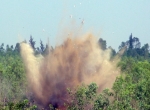 In 1944 he returned to Canada to administer Camp Borden, where replacements were trained for the Canadian Armoured Corps and Infantry, as well as the Royal Canadian Army Service Corps and the Canadian Provost Corps. Worthy soon discovered that other things had changed since he left in 1942. Black market selling was out of control by this time, with fuel, food and building materials being the hot items. Worthy as usual had an unconventional method of stopping the stolen items from leaving the camp. He posted Provost Marshals at the gates to search vehicles leaving, forcing the thieves to take the back roads and trails to get out of camp. Worthy had the engineers dig trenches to make it impossible for vehicles to get through.
In 1944 he returned to Canada to administer Camp Borden, where replacements were trained for the Canadian Armoured Corps and Infantry, as well as the Royal Canadian Army Service Corps and the Canadian Provost Corps. Worthy soon discovered that other things had changed since he left in 1942. Black market selling was out of control by this time, with fuel, food and building materials being the hot items. Worthy as usual had an unconventional method of stopping the stolen items from leaving the camp. He posted Provost Marshals at the gates to search vehicles leaving, forcing the thieves to take the back roads and trails to get out of camp. Worthy had the engineers dig trenches to make it impossible for vehicles to get through.
The most unconventional method however, was having the engineers lay landmines on the back trails, with the trigger points set back about 50 yards, thus ensuring that no one would actually get hurt. The troops got the message though, as no one wanted to take any chances with a commander who mined roadways.
Angus as a name is also related to the particular breed of Cattle called Angus.
Angus cattle are a famous breed of cattle known for being, hornless, hardy, strong, and adaptable, making them an ideal cattle breed for cattlemen across the country. Black Angus is the most commonly known brand recognised in North America. Cattle ranchers in Scotland during the 1800s must have thought so too. The counties of Aberdeen, Kincardine, Banff, and Angus are located in the northeastern area of Scotland. The county of Angus was especially known for their quality production of animal feed, grain crops, and potatoes. Within Angus County was a shire called Strathmore. This area was known as one of the finest valleys in northeast Scotland and has been credited in the historical origins of the Aberdeen-Angus breed of cattle.
The gentleman credited as the founder of Angus cattle is Hugh Watson of Keillor. He resided in Strathmore in the county of Angus and was the proud descendant of a father and grandfather who bought and bred Aberdeen-Angus during the 1700s and 1800s. When Hugh Watson came of age 19 in the year 1808, he became a resident at Keillor. At that time, he began a cattle buying and breeding business for himself. His father graciously gave him six of his top quality and blackest cows, along with one bull. Hugh Watson had an eye for what type of cattle would help him achieve the characteristics of the Angus breed he hoped to achieve, so he purchased 10 more heifers and another bull from Scottish cattle markets. Heifers during this time period were characteristically mottled in color, but the bulls Watson had were solid black. He decided that black was the color he wanted in his herd and began breeding accordingly.
Although Hugh Watson owned several Black Angus cattle, most of the Angus cattle for sale today can be traced back to a bull and a cow on Watson’s ranch. The bull’s name was Old Jock (126) and the cow’s name was Old Granny (125). It is recorded that Old Granny lived 35 good years before she was struck by lightning and died. However, between Old Jock and Old Granny, 29 calves were produced!
Hugh Watson is credited as a leader in cattle breeding in his day. He was unusual in that he showed his cattle more than other cattlemen and breeders of his day who raised Angus cattle for sale. During his lifetime, he won over 500 prizes for his Angus cattle and increased awareness and appreciation for black Angus cattle as far as the British Isles.
Other contributors to the Angus breed include men by the names of Lord Panmure, William Fullerton, and Robert Walker. These men also raised and bred Angus cattle during the 1800s. Mr. William McCombie of Tillyfour (Scotland) is credited in historical writings with the furtherance of the Aberdeen-Angus breed of cattle.
Angus has been the residential choice of many Military families. When the Angus arena was first opened and the minor hockey league was first established many of the coaches were from Military Families who were posted to CFB Borden. Over the generations of families involved in sports and other recreational activities in the Angus /Borden area, many of the supporters and teachers have been military family personnel. This close and professional contact has fostered a unique bond between the town of Angus and the military personnel who have played such a large part in the growth of Angus as a Community.
Our IRP-DND.COM local Realtor has fostered a unique relationship with their clients also. As the local expert in schooling, education, employment, daycare, neighborhood preferences, medical practitioners, commuting and housing prices, your expectations will always be exceeded. Our mission is to provide the best possible service to you, our most valuable client.
Welcome to our Canadian Military IRP Relocation Site
Welcome to Canada's Largest Directory of Military and RCMP Relocation Realtors. These Approved Realtors are your Local Experts who fully understand the rules and requirements of families involved in the Relocation Program. Understanding the Local Real Estate Market is of paramount importance to our clients, whether Buying or Selling.
To find your Local Relocation Expert just Choose Your Province from list below. You will then have a List of Military Bases to choose from.
All our Realtors are Authorized Military Relocation Experts who are dedicated to putting their knowledge of DND requirements to ensure your next posting is as "Stress Free" as possible

